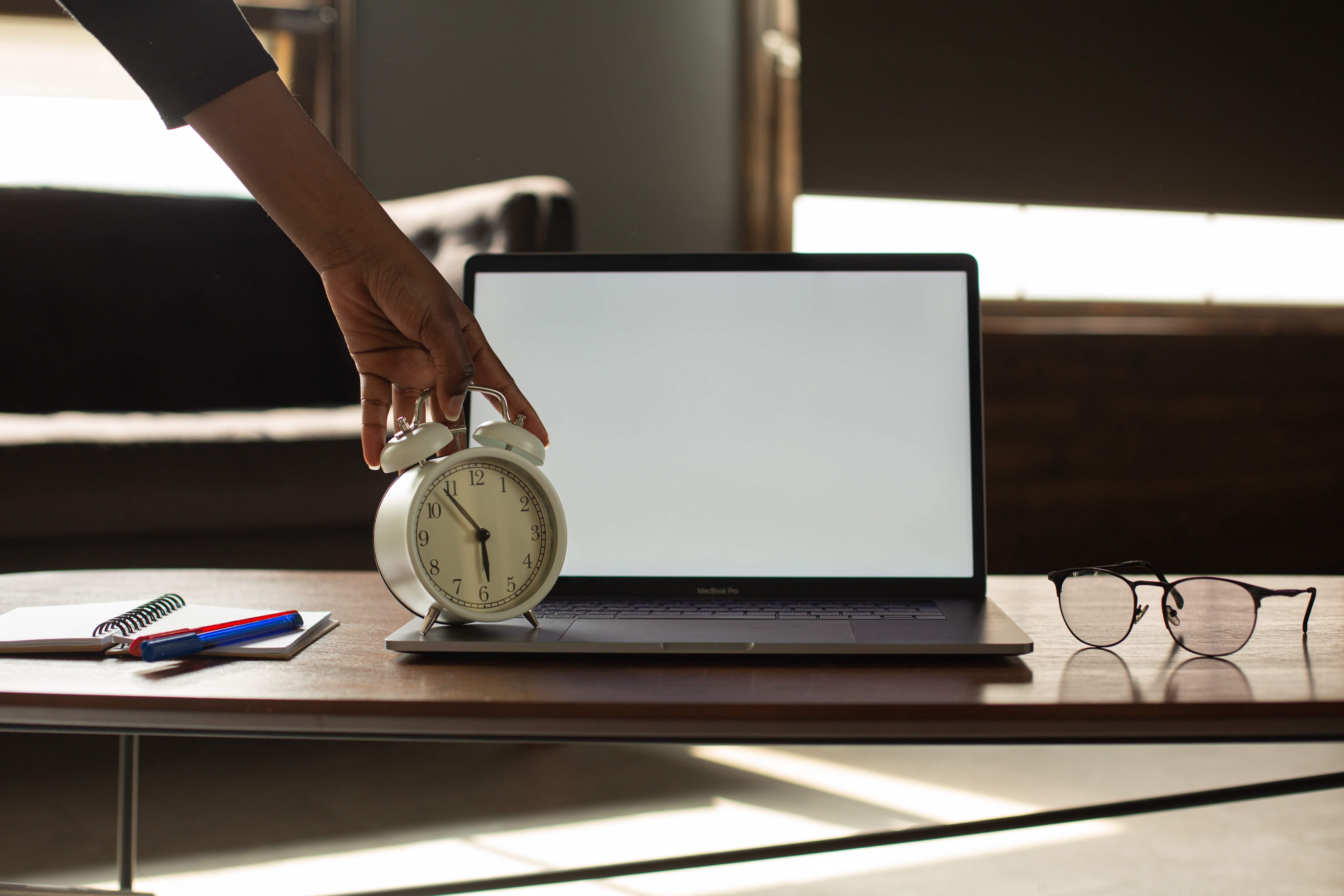Seasonal affective disorder (SAD) is a type of depression affecting millions worldwide. It is a mood disorder which occurs during the dark and cold seasons, especially in the Northern Hemisphere. It is often characterised by low energy, lethargy, sadness, anxiety, irritability, and carbohydrate cravings. While SAD has various causes, including environmental factors, one possible contributing factor is excessive screen time.
It is no secret that technology has become an integral part of our daily lives, especially during the pandemic when many of us have had to work, study, or socialise remotely. We rely on screens for entertainment, information, communication, and productivity. However, excessive screen time can have adverse effects on our physical, cognitive, and emotional health, including sleep disturbances, eye strain, and mood. These effects can be particularly problematic for people with SAD, as they may exacerbate the characteristics and make it harder to cope with the condition.
One of the main ways excessive screen time can contribute to SAD is by disrupting our circadian rhythms. This internal clock regulates our sleep-wake cycles and other physiological processes. Exposure to bright screens, especially at night, can suppress melatonin production, a hormone that helps us fall asleep and stay asleep. This can lead to insomnia, fragmented sleep, and fatigue, worsening SAD characteristics such as low energy and irritability. Moreover, irregular sleep patterns can disrupt the body’s natural production of serotonin, an essential neurotransmitter for mood regulation and well-being. Low serotonin levels are often associated with depression, anxiety, and carbohydrate cravings, common characteristics of SAD.
Another way excessive screen time can contribute to SAD is by reducing our exposure to natural light, which is a critical factor in regulating our biological rhythms and mood. Spending too much time indoors, in front of screens, can limit our exposure to sunlight, which is the primary source of vitamin D and a powerful regulator of our immune system, bones, and brain. Sunlight also stimulates the production of endorphins, the “feel-good” hormones that can improve mood, reduce pain, and boost immunity. Therefore, lack of sunlight can increase the risk of SAD and other mood disorders, especially in people who live in regions with limited daylight during the winter months.
A third way excessive screen time can contribute to SAD is by reducing our physical and social activity, which are vital for our mental health and well-being. Spending long hours in front of screens can lead to a sedentary lifestyle, which can increase the risk of obesity, diabetes, and cardiovascular disease and worsen SAD characteristics such as fatigue and low energy. Moreover, excessive screen time can reduce our opportunities for social interaction, a crucial source of support, empathy, and happiness. Social isolation and loneliness are major risk factors for SAD and other mood disorders. They can be exacerbated by excessive screen time, especially if it replaces face-to-face communication or outdoor activities.
Given these potential risks of excessive screen time for SAD, finding ways to balance our use of technology with our well-being is essential. Here are some processes that can help:
- Set limits on screen time: One way to reduce excessive screen time is to set clear boundaries on when and how we use technology. For example, we can establish a “digital curfew” in which we avoid screens for at least an hour before bedtime, or we can schedule regular breaks during the day to stretch, walk, or do other non-screen activities.
- Use blue light filters: Another way to reduce the negative effects of screens on our sleep and mood is to use blue light filters on our devices, such as Night Shift on iOS or Night Light on Android. These filters can reduce the number of blue light screens emit, which interferes with melatonin production and circadian rhythms.
- Practice outdoor activities: One way to increase our exposure to natural light and physical activity is to engage in outdoor activities, such as walking, hiking, or gardening. Even a short walk or break outside can constructively affect our mood and well-being, especially in the morning or midday when sunlight is strongest.
- Exercise regularly: Another way to improve physical and mental health is to exercise indoors or outdoors. Exercise can increase the production of endorphins, boost our immunity, reduce stress and anxiety, and improve our sleep quality, all of which can help alleviate SAD characteristics.
- Practice mindfulness and relaxation: One way to counter the stress and overstimulation of screens is to practice mindfulness and relaxation methods, such as meditation, yoga, or deep breathing. These practices can help us regulate our emotions, reduce tension and pain, and improve our attention and focus.
- Seek professional support: If SAD characteristics persist or worsen despite these suggestions, it is essential to seek professional support from a healthcare provider, therapist, or counsellor. They can provide diagnosis, support, and guidance on managing SAD or other mood disorders and may suggest additional resources.
- Technology: Some technology tools can help manage SAD or improve mood. For example, light therapy devices can simulate the effects of natural light and regulate circadian rhythms. At the same time, mood-tracking apps can help monitor and identify triggers and patterns of mood changes. Meditation apps like Headspace or Calm can provide guided meditation and relaxation exercises. In contrast, balanced use of social media platforms like Facebook or Twitter can connect us with supportive communities and resources.
How Therapy Can Help Balance Screen Time And Well-Being
When we find ourselves lost in the infinite scroll of social media or glued to our screens for hours, it can be difficult to pull ourselves away from the virtual world and reconnect with the present moment. This disconnection can be even more challenging for individuals struggling with seasonal affective disorder (SAD), as the darkness and cold of winter can exacerbate feelings of isolation, sadness, and anxiety. Fortunately, therapy can be a powerful tool to help balance screen time and well-being.
Therapy provides a space to explore the underlying causes of excessive screen time and its effects on our mood, behaviour, and relationships. By working with a therapist, we can better understand our patterns of screen use, such as when and why we turn to screens, what triggers us, and what feelings or needs we are trying to fulfil. We can also identify the negative consequences of excessive screen time on our physical and mental health, such as sleep disturbances, eye strain, fatigue, social isolation, and low self-esteem.
Therapy can also help us develop new skills and processes to balance screen time and well-being. For example, a therapist may suggest setting boundaries for on-screen use, such as turning off notifications, avoiding screens before bedtime, or scheduling screen-free breaks throughout the day. They may also encourage us to engage in alternative activities that promote well-being and connection, such as exercise, meditation, hobbies, or socialising with friends and family. By incorporating these activities into our daily routine, we can reduce our dependence on screens and enhance our sense of purpose, pleasure, and vitality.
Furthermore, therapy can help us address the underlying emotional issues that may contribute to excessive screen time and SAD. For example, therapy can help us explore and process unresolved feelings of loneliness, sadness, anxiety, or trauma that may lead us to seek comfort or distraction from screens. It can also help us build resilience and adaptive processes to manage stress, uncertainty, and transitions without relying solely on screens. By addressing these emotional issues, therapy can help us improve our overall mental health and well-being and reduce the risk of relapse or future mood episodes.
In summary, therapy can be a valuable resource to help balance screen time and well-being, especially for individuals struggling with SAD or other mood disorders. By providing a safe and supportive space to explore our patterns of screen use, develop new skills and processes, and address underlying emotional issues, therapy can help us improve our overall quality of life and find greater meaning and connection in the real world.

